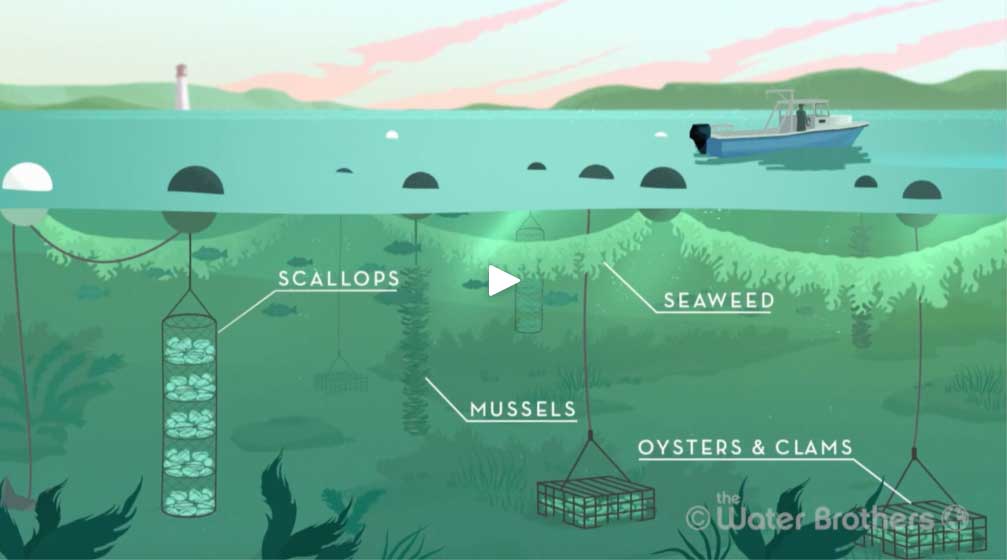
Thimble Island Ocean Farm
GreenWave is setting a course to the future.
GreenWave is an ocean farmer and fisherman-run non-profit organization dedicated to building a new blue-green economy that creates jobs, mitigates climate change, and grows healthy food for local communities.
GreenWave was founded by Bren Smith, Executive Director and owner of Thimble Island Ocean Farm, who has pioneered the development of restorative 3D Ocean Farming.
3D Ocean farming is a polyculture vertical farming system growing a mix of seaweeds and shellfish that requires zero inputs - making it the most sustainable form of food production on the planet. It also sequesters carbon and rebuilds reef ecosystems. Since these farms sit below the surface and leverage the entire water column, they produce high yields with a small footprint.
His co-founder, Emily Stengel, brings to GreenWave a background in sustainable food systems, working for several years at a B-Corp catering company in NYC, dedicated to supporting the regional farm and food economy. She understands how crucial the relationship with chefs is to changing the way we think about different foods.
With over 10,000 edible plants in the sea and more of the United States underwater than above, they believe this is our opportunity to rearrange the seafood plate and reduce pressure on fish stocks, with sustainable seagreens in the middle and wild fish at the edges.
Together, Ben and Emily are actively working towards a day when there are thousands of restorative ocean farms on coasts around the world contributing food, fertilizers, energy and much more to local economies, while saving our oceans – and ourselves.
”The thing that's changed is the environment,” Smith said. ”We can't do things in the same old way anymore.” Read more from the Hartford Courant.
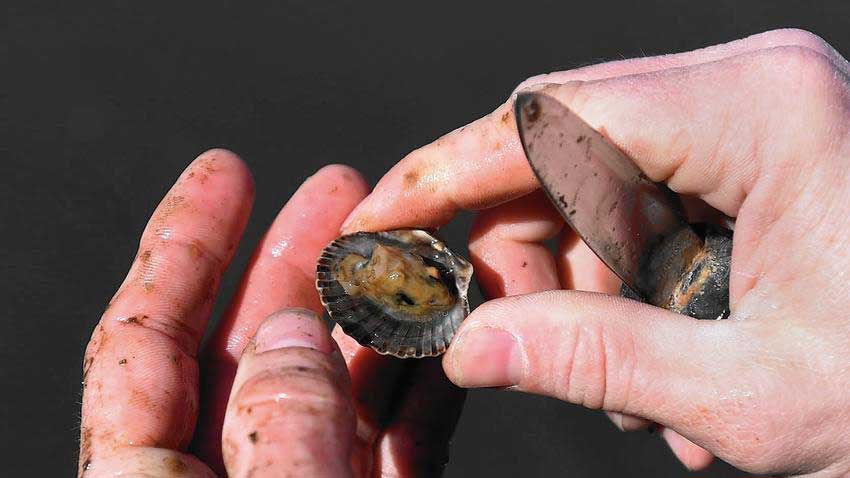
Baby Scallop from Thimble Island Ocean Farm
The Future for Fish Aquaculture
Donna Lanzetta, a native Southamptonite, thinks finfish aquaculture has a golden future – if it successfully moves into the deep blue.
Lanzetta is the CEO of Manna Fish Farms, located in the old Lobster Grille location - once the landmark signaling that you had finally arrived in the Hamptons! Manna plans to become the first aquaculture company to farm fish in federal waters on the East Coast of the United States.
In 2018, the company plans to begin producing striped bass in floating aquapods eight miles off the coast of Long Island. Permitting is the last hurdle, but it’s getting closer.
Manna Fish Farms will use world-proven submersible cages and automated feed technologies to grow local, wild species of finfish, as well as to research integrated, multi-trophic aquaculture with kelp and sea scallops. The proposed 1.5 square mile site is located eight miles from shore, off the South Shore of Eastern Long Island.
”The U.S. is way behind many other countries in the world in developing marine aquaculture”, Ms. Lanzetta said. “The simple fact is that the U.S. is exporting a large percentage of its wild catch and is importing more than 90 percent of its seafood from poorly regulated markets like Asia, that offer an inferior, cheap product. It does not make sense.”
Here is a bit more background on farming fish at sea:
- More from Edible East End: Taking the Plunge into a New Way of Farming: A Fish Farm Grows Off the East End of Long Island
- And from the East Hampton Star: Fish Farming on the High Seas
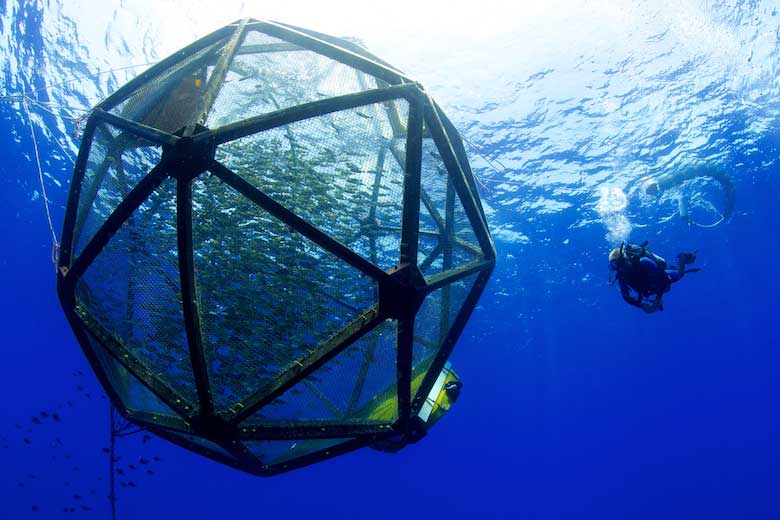
Aquapod Diver (Courtesy of Edible East End)
Watch and Learn about Aquaculture
We hope you have a chance to sit down with your favorite beverage and watch these videos:
- East Hampton Shellfish Hatchery
- "Oysterponds" Oyster Farm on Long Island, NY
- Road Journal Presents S.P.A.T. Scallop Aquaculture Program
- NYT: Long Island's Lost Lobsters
- A Look at a Long Island Oyster Company
- A Climate of Change: The Future of Aquaculture
- Edible Long Island On The Road: Blue Island Oyster Farm
- Deep Sea Fish Farming in Geodesic Domes
Maybe watch with a couple dozen local oysters?
Lagniappe [lan-yap]: Cajun for a little something extra . . .
Chef Noah Schwartz is one of the pioneers in the Fish Farm to Table movement, introducing the East End to the culinary, health and commercial benefits of the sea’s latest superfood - Kelp.
In June 2017, a special dinner was held at Noah’s Restaurant in Greenport. On the menu was the first kelp harvest from Cornell Cooperative Extension Marine Program’s Peconic Estuary Seaweed Aquaculture Feasibility Study.
Chef Schwartz’s five-course menu included kelp-wrapped seared yellowfin tuna, followed by kelp sushi rolls. For a third course, he used a commercially sold kelp noodle to make a kelp noodle salad, working Cornell’s fresh kelp into the salad with a miso vinaigrette.
Next up were sea scallops, dusted with dried kelp and cooked in a kelp-powder-infused olive oil, served on risotto. Finally, for dessert, a flourless chocolate cake made with kelp.
“I replaced some of the cocoa powder in the cake with dried kelp powder," Schwartz explained. “It kept the cake moist and added just a touch of savoriness that everybody enjoyed."
Not to be outdone by Noah’s, this past January, Pat Alfred, the head brewer at Greenport Harbor Brewery also took up the kelp challenge, making a limited edition kelp beer, with kelp provided by Cornell. The beer was such a success, Greenport Harbor Brewery is already talking about making it again.
Click here for the entire article from Edible East End . . . Kelp. It’s What’s for Dinner.

Local Scallops at Noah’s Restaurant, Greenport NY
So, when you see seaweed on the menu, and not necessarily in a Japanese restaurant, say “yes please . . .”
Supporting aquaculture is good for the environment, our community, and you! Call us or email us to book your stay.
It’s been my pleasure,
– Gary
p.s. Here are the links to my previous blogs on Aquaculture and Agriculture:
- Aquaculture: Where Our Seafood Grows September 10, 2018
- Aquaculture: Protecting the Waters of the East End September 3, 2018
- East Hampton Farming, Re-Imagined July 15, 2018
Enjoy!
